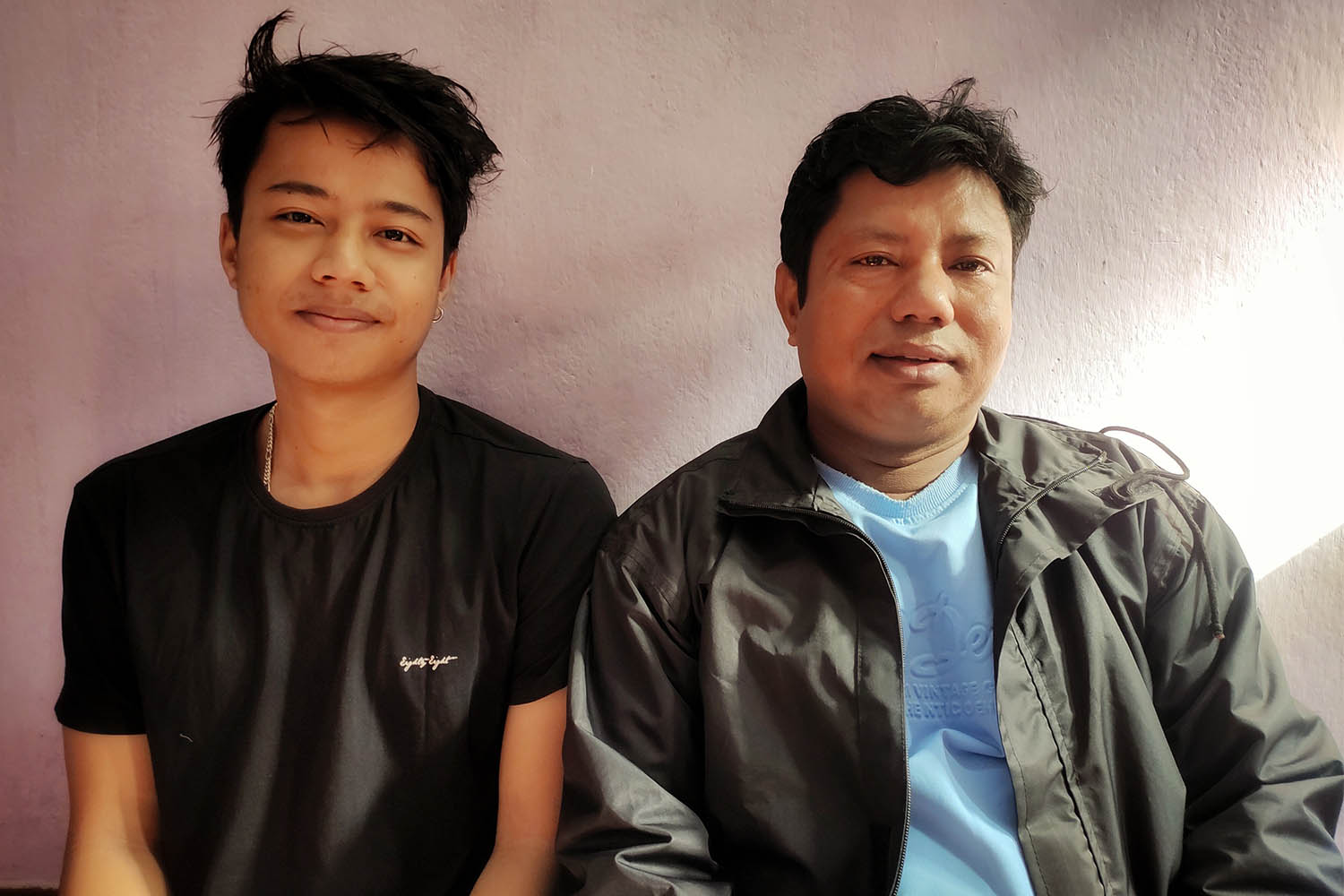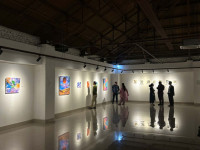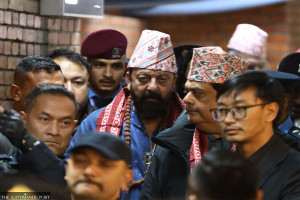Culture & Lifestyle
How Dashain celebrations have changed
From kite-flying and family gatherings to social media snapshots, read all about the changing essence of Dashain as parents and their offspring share memories and experiences of the festival.
Post Report
Ganesh Prasad and Bimal Acharya
Age: 46 and 20
Address: Dadhikot, Bhaktapur
With the arrival of Dashain, people gathered to paint their houses with white cement and clear their yards of overgrown bushes. After Ghatasthapana, families with bamboo would share it to build swings, filling the village with excitement. The return of loved ones from abroad infused the air with energy, and instead of purchasing beaten rice, neighbours would queue up to use the traditional grinder at households that owned one. Dashain fostered a strong sense of community and togetherness. - Ganesh Prasad (Father)
This year, during Ghatasthapana, the festive spirit felt dimmed by the devastating floods and landslides that have left the country in mourning. Five years ago, when I first arrived in Kathmandu, the skies were filled with kites, but now, even on the 3rd or 4th day of Dashain, not a single kite has been seen. The celebration of Dashain now seems limited to playing cards and wearing jamara (barley seedlings). - Bimal
Hera Laxmi and Jeena Maharjan
Age: 46 and 21
Address: Bhaisepati, Lalitpur

As a member of the Newa community, I grew up celebrating many festivals, but Dashain always felt special. Kathmandu Valley was less crowded when I was young, with open fields and meadows everywhere. My siblings and I flew kites in such fields. We didn't buy clothes year-round; we eagerly waited for Dashain to get new ones. The joy of celebrating Dashain was a unique and beautiful feeling—one that's hard to find now. - Hera (Mother)
When I was in school three years ago, Dashain meant a pile of vacation assignments. I’d rush to finish them to play Linge Ping (a type of swing) with my cousins. But now, in this digital age, I no longer feel like going out to play. Instead, I spend time making TikTok videos. With most of my relatives abroad, being online has helped me stay connected—I can send wishes and receive blessings digitally. Dashain doesn’t feel complete until I post a selfie with tika. - Jeena
Sunita Kumari and Anjali Shah
Age: 50 and 23
Address: Kaudena-06, Sakraul, Sarlahi

I remember my Dashain in my early 20s, swinging in the trees of Bharathwa. Every Dashain, I worshipped at home and at the Durga Pandal, where handmade statues of Durga and other gods were displayed. From Ghatasthapana, I prepared for rituals, participated in the Kalash Yatra, and dressed in new clothes. I tied my hair in two braids until Phulpati, after which I wore new clothes daily until Nawami. I lit incense with friends each evening, enjoyed the Jhijhiya dance at Barhamsthan, and visited my friend’s house to receive Tika, just like at the Durga Pandal. - Sunita Kumari (Mother)
Dashain feels like just another festival to me—a vacation from college to visit home. Transportation fares are high, and getting proper bus seats is difficult, so I often miss the Kalash Yatra on the first day. I miss walking and carrying the Kalash to the Durga Pandal. Nowadays, we don’t follow most of the restrictions from the past. I usually wait until Phulpati to wear new clothes and visit fairs for good food and music. In the evenings, I watch girls light the diyos and take videos. I also enjoy the Jhijhiya dance at night. Most of all, I cherish family gatherings, which are rare at other times. - Anjali
Uddhav and Denish Parajuli
Age: 59 and 19
Address: Shanti Chowk, Biratnagar

When I was young, Dashain celebrations began a month before, uniting everyone to clean the roads and plant flowers around homes. Dashain was vibrant and joyful, bringing our family and relatives together under one roof. Reflecting on those days makes me nostalgic. Nowadays, Dashain comes and goes without the same joy and excitement, leaving me saddened as I see relatives refusing to participate in traditions. - Uddhav (Father)
On Dashain mornings, I send ‘Happy Dashain’ messages and reply to friends' well-wishes. Dashain is about new clothes and festive treats, so I prefer online shopping to avoid crowded markets. After receiving Tika from my elders, they transfer money directly to my bank account. These days, it's rare to see kites in the sky or people playing Linge Ping in the city, so the day after tika, I usually go hiking or sightseeing with friends. I spend most of the holidays with them before returning to my routine after Purnima. - Denish\
Raj and Rahul Bisunkhe
Age: 43 and 25
Address: Jeelu, Dolakha

We eagerly anticipated buying new clothes, visiting the market, and gathering food and supplies for home. During Dashain, we had less household work, allowing us to enjoy swings, fly kites, and hang out with friends. Tika days were significant, as I received money and blessings from elders, indulged in sweets, and enjoyed quality time with my family. - Raj (Father)
Dashain is a time for family gatherings, and while I can enjoy good food, hang out with friends, and engage in activities anytime, finding time to be with family and relatives has become increasingly rare. For me, Dashain is about cherishing moments with my grandparents. Nowadays, the festival often feels more like an occasion for showboating, with many focused on capturing perfect pictures and videos for social media. - Rahul
Prabha and Shilbhiya Sedhain
Age: 43 and 20
Address: Naikap, Kathmandu

During my childhood, Dashain was a time of immense joy. We began food preparations a week in advance, peeling garlic and gathering spices. The highlight was wearing new clothes, and the atmosphere buzzed with 30–40 relatives visiting to apply tika in a single day. Today, Dashain feels less vibrant. Children can enjoy delicious food and buy new clothes at any time. Many prefer solitude, retreating to their rooms with gadgets instead of socialising during festivals. - Prabha (Mother)
Recent floods and landslides have made travel difficult, and customs like jutho and sutak have further strained family connections, making it hard to celebrate Dashain together as we used to. Dashain has become more Westernised and influenced by alcohol consumption. We find ourselves between traditional rituals and modern celebrations, which can be confusing. Despite the changes, Dashain still holds special meaning for me. I enjoy shopping for traditional clothes, spending time with my family, and playing cards. - Shilbhiya




 5.13°C Kathmandu
5.13°C Kathmandu














